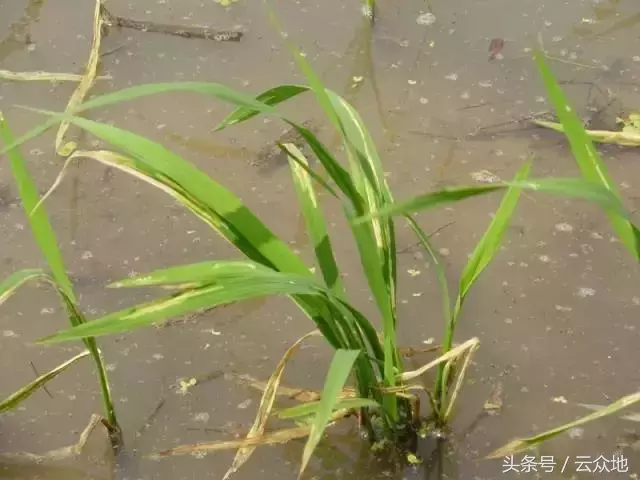Rice stalk fly is also known as rice stalk diving fly as a pest of rice, parasitizing in the swimming grass, barnyard grass and watch wheat lady overwintering, with larvae drilled into the rice stem, for the heart leaf, growth point or young ears, the heart leaf after extraction appears small holes or white spots, the tip of the affected leaf becomes yellowish brown, there are several slender juxtaposed cracks on the leaves after the leaf spread, the main heart of the seedling is dead up to 3--15%, it is not easy to be found, many farmers call the drug harm, and many farmers say that it is the dry heart caused by the dimorph borer.
It is not until the later stage that the tillers of the affected plants increase, the plants are dwarfed, the panicles are delayed, the panicles are small, and the grain is increased, which is easy to be found at this time.
In recent years, the pest of this insect has shown an upward trend. After investigation, the author has seen a large number of rice stalk diving flies in Ningxiang, Yiyang Taojiang, Hanshou, Anxiang and other places.
Life habits of the rice stalk leafminer fly: Adult insects rest at sunrise and night, and windless weather activities are more abundant. Adults prefer to lay eggs on leaf tips on sagging and flat surfaces, so deep-water irrigation, weak seedlings, and poorly tender seedlings are heavily loaded. Rice stalk diving flies lay eggs during the day, with multiple spawning habits, each egg laying 3-10 grains, up to dozens to hundreds of grains, hatching into larvae in 5-7 days, after hatching the larvae will invade the leaf flesh submerged feeding, and some have transfer habits.
Rice stalk flies occur in about 3-4 generations a year in Hunan, and there is feeding activity in January and February, and the adult overwintering generations appear in early spring and April, and fly to the seedling fields and Honda to lay eggs. The first generation of adults emerge in June and lay their eggs in medium and late rice seedling fields, single and double cropping late rice hondas, and the larvae harm heart leaves or young ears. The second generation of adults emerges in August, begins laying eggs on the overwintering host in September, and the larvae hatch and burrow into the heart leaves for the winter.

Rice stalk diving fly spawning site
Rice stalk fly larvae
Rice stalk diving fly pupae
Adult rice stalk flycatcher
Rice stalk fly hazards
Larvae drill moth rice
Rice stalk fly hazard leaf sheaths
Rice stalk diving flies harm rice ears
Prevention programmes:
1. Select insect-resistant varieties;
2. Reasonable dense planting, no partial application, late application of nitrogen fertilizer, formula fertilization, so that rice growth is robust.
3. Cultivate strong seedlings with tillers and transplant with medicine. Keeping the leaves upright in shallow water reduces the chance of adults laying eggs and causes the larvae to lose their chances of survival due to lack of water and ultimately reduces leafminer infestation.
4. Chemical prevention and control follows the principle of ruthless treatment of the first generation and the second generation of treatment. Master the adult blooming period or larval incubation period, with the new Changshan to penetrate 100 ml / mu, the new Changshan dragon fly diamond (5% avermectin) 100 ml / mu or 48% Les ben emulsion 100 ml spray control.
Original author: Liu Zhichong, New Changshan Marketing Department New Changshan Agricultural Materials Alliance, the copyright belongs to the original author, please indicate the source when reprinting. Yunzhongdi service purpose: an attitude, focus on rice and wheat planting technology of agricultural self-media, to help farmers popularize planting technology knowledge, to solve farmers planting problems. If there are any deficiencies, I hope my friends will comment.